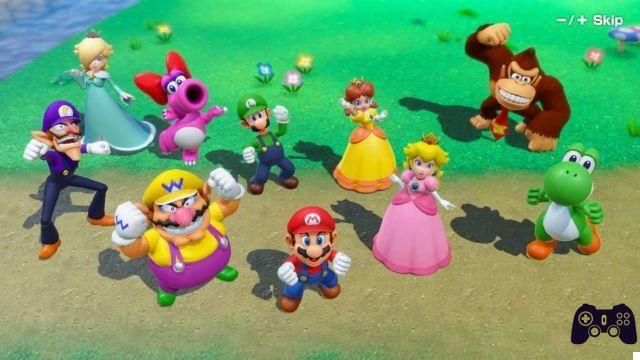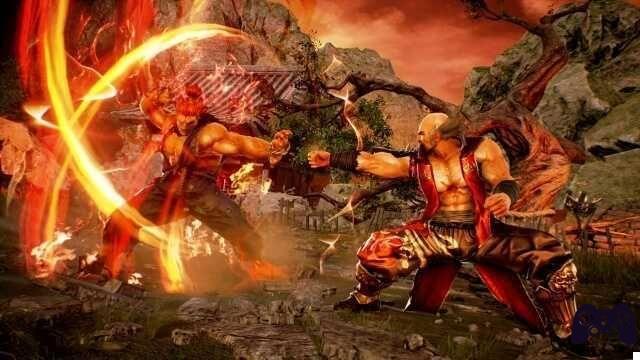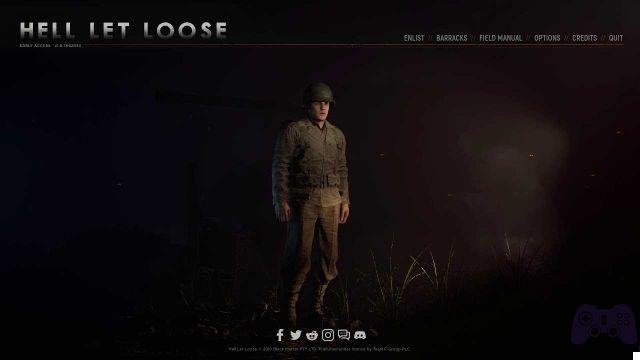Welcome back to the second installment of our in-depth guide to Super Smash Bros. Ultimate's stellar cast of playable characters
In this ours guide, we will devote ourselves to the many characters playable of Super Smash Bros. Ultimate, starting with Mario up to the latest additions of the second Fighters Pass. In each episode we will describe about five or six fighters, however, dividing them according to the chapter of Smash in which they made their debut. In our second date, we'll talk about the remaining cast from the first game: Fox e Pikachu as characters from the base roster, and the first four secret fighters Luigi, Ness, Captain falcon e Jigglypuff.
Quick Preamble
In Super Smash Bros. Ultimate, each player's task is to knock opponents off the screen, battling in arenas that mix the genre of fighting with elements of platformer (X and Y allow you to jump). The A and B keys, used in combination with the various directions, give life to the most disparate moves, as well as the back keys to manage shields, dodges and holds. The game also implements tools that irremediably alter the fate of each encounter, but in this guide we will basically focus only and only on the characters themselves. Increasing the opponent's damage will make him lighter and, therefore, vulnerable.
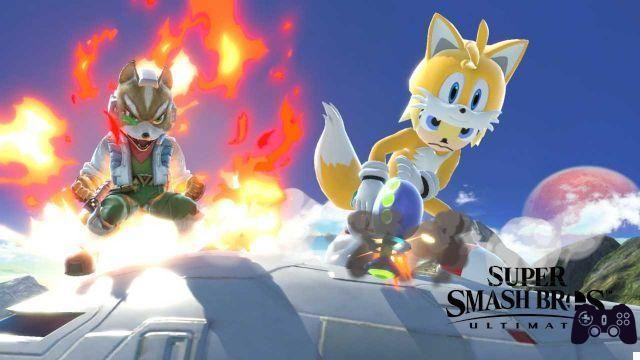
Fox - Super Smash Bros. Ultimate Character Guide
The fox of the cosmos, the Fox pilot, in the Smash series acts decidedly outside his element: his series of origin, in fact, is almost entirely composed of hybrids between shoot-em-up and rail shooter. In simple terms, Fox McCloud he went from piloting a single-seat space shuttle to having to defend himself on foot. Despite a more or less simple moveset, Fox has always been a coconut of the competitive scene: let's find out why.
- Franchise of origin: StarFox (in Europe StarWing for copyright reasons; the sequel StarFox 64 was called Lylat Wars)
- Origins: Fox McCloud is part of the second StarFox mercenary squad, inherited from his father James. The only survivor of the old team, the Peppy Rabbit, leads the rest of the brigade, made up of the Slippy frog and one of the other two representatives of the series in Smash, Falco. Each game in the StarFox series focuses on the scientist Andross' threat to Lylat's solar system.
- Gameplay: Fox is a character who rewards most of all the player who knows what he is doing. As a demonstration of this, the standard Special Attack (B) - the one performed on the spot - allows it to be used over and over again, but all the laser bullets will do is increase the opponent's damage. Fox stands out in the total absence of launch power from its laser beams, which however can be used to make good use of time spent at a safe distance from enemies. Fox's Side Special (↔ + B) is instead a sprint forward that covers generous distances, but will stop at the edge of the platform as long as the move is made on the ground. Fox's Special Down (↓ + B) reflects bullets like Mario's Cape (last episode). The upward one is directional: to trigger it you need to press ↑ + B, hold down B and change direction.
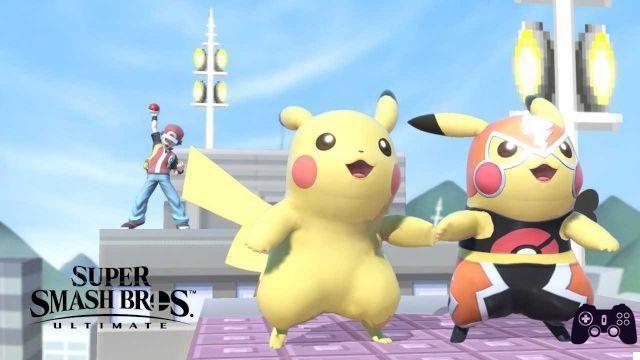
Pikachu - Super Smash Bros. Ultimate Character Guide
Among the more than seventy characters in the game hardly Pikachu it needs introductions, but for those unfamiliar with the Pokémon brand we limit ourselves to saying that the agility that sets it apart has not been lost in Super Smash Bros. Ultimate. The rodent does not abuse its dominance of electricity in all the moves at its disposal, thus allowing for a bit of variety.
- Franchise of origin: Pokémon
- Origins: Pikachu's fame is such that in the first Super Smash Bros. its description was openly taken from the Pokédex. In the end, however, Pikachu is "one of many": a rodent-like Pokémon capable of storing electricity in its red cheeks. In the now defunct "national" numbering in Pokémon Sword and Shield, Pikachu is Pokémon number 25.
- Gameplay: Pikachu's standard Special Attack (B) is his iconic Tuonoshock. For the sake of consistency with the original games, the little lightning bolt bouncing off the stage does a modest amount of damage, and makes the target jump slightly. Thunder Shock can also be thrown in mid-air. The Side Special Attack, Headshot (↔ + B), can be charged and hurl Pikachu forward based on the charge level reached. Thunder, the Special Attack at the bottom (↓ + B), calls a lightning bolt on Pikachu's current position: this forces the character to stop before the lightning arrives, but the casting power is not low at all. The weak point of the move is that it cannot cross platforms. Rapid attack (↑ + B) is based on the same principle as Fox, but demands faster reflexes from the player. You will have to experience before we get carried away.
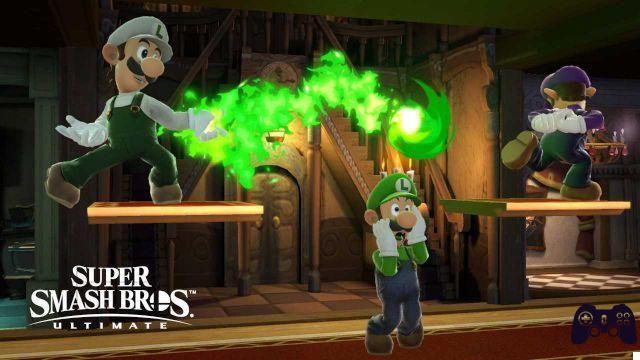
Luigi - Super Smash Bros. Ultimate Character Guide
Unlike Captain Falcon and Ness, Luigi is one of two characters to have always been an extra to unlock in the various Super Smash Bros .; the other is Jigglypuff, although the fourth Smash was the only exception. Just like in his original series, Luigi is distinguished from Mario by the ability to jump higher of him. From the first Smash for Nintendo 64 to today, however, the differences between the two they were more and more marked.
- Franchise of origin: Super Mario
- Origins: Luigi was born in Mario Bros. as Mario's twin, identical in everything except for the colors. In the years to come, the main platformer series made Luigi available only as a second player (the Japanese reading, "Ruiji" means "similar"). With the launch game for Nintendo GameCube, Luigi's Mansion, Luigi's evanescence was justified by making him canonically a little fifone, a feature Smash has embraced since Brawl.
- Gameplay: The only Special Attack Luigi really has in common with Mario is the upward one (↑ + B), and there are differences there too. In the case of Luigi, in fact, the upright becomes devastating if it hits the enemy a close range. The fireball (B), unlike Mario's, does not bounce off the ground. The Green Missile (↔ + B) is based on the same principle as Pikachu's Headshot, but with the random chance to hit at maximum power. The Luigi's cyclone (↓ + B) allows you to trap opponents and then hurl them away. Luigi's grab, unlike Mario's, can also be done at a distance.
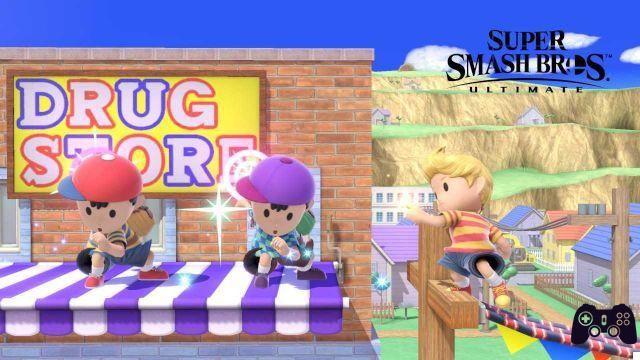
Ness - Super Smash Bros. Ultimate Character Guide
Any similarity between Ness and the sprite of the protagonist of Pokémon is random… or maybe not. Born from the mind of Shigesato Itoi on Famicom (the Japanese NES), the series MOTHER aims to put Japanese RPGs to the hatch by replacing fantasy with 60s America, swapping swords with baseball bats, more abstruse statuses (such as Final Fantasy's "silence") with homesickness , and spells with mental powers. Ness is the protagonist of the second MOTHER, known in the West as EarthBound.
- Franchise of origin: MOTHER
- Origins: The aforementioned powers of Ness awaken when a meteorite above the city of Onett (visible in the background of the Smash scenario of the same name, image above) reveals the threat of the alien Giygas. From the first minutes of the game, a psychedelic adventure begins which culminates in the final confrontation with the aforementioned antagonist with features… Lovecraftian in their incomprehensibility.
- Gameplay: In general, Ness's Special Attacks are normal. With PsychoFlash (B) you can hold the button and direct the move to show where to detonate it. With PsychoFire (↔ + B) you can cast a fire spell that will trap the enemy in place dealing continuous damage. MagnetePSI (↓ + B) allows you to absorb bullets to heal. However, it is the Special Attack above (↑ + B) that dictates the experimentation. Ness's second jump is like Yoshi's: generous, but often you have to make it enough. PsychoThunder (↑ + B) consists of a directional bolt to be directed towards Ness himself, but beware: the direction from which it arrives determines the one in which the character will fly.
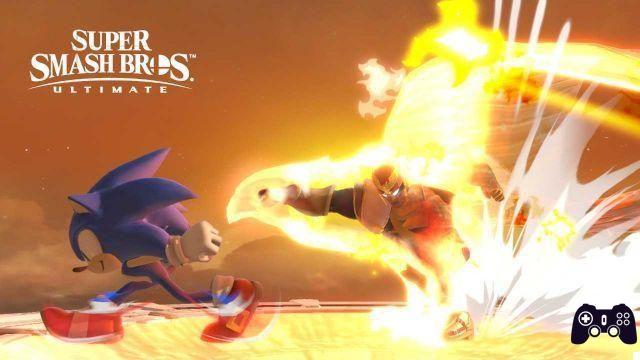
Captain Falcon - Super Smash Bros. Ultimate Character Guide
We got to Captain falcon, the only legacy of the prototype of the first Super Smash Bros. entitled "Dragon King: The Fighting Game". Masahiro Sakurai wanted to create a fighting game accessible to all and playable in four players, an idea made possible by the elements of platforming. However, all that is left of Dragon King is the pose of one of the texture-free wrestlers, which set the stage for Captain Falcon in the game.
- Franchise of origin: F-Zero
- Origins: The talk with Fox also applies here. Captain Falcon, whose (semi) canonical name is Douglas Jay Falcon, is a Formula Zero driver (abbreviated as you can imagine) from our own planet. After serving in law enforcement (hence the rank of captain), Falcon alternated between a stellar career as a champion of anti-gravity racing as a front and his real job as a bounty hunter. The idea behind the character arose from the need for an American comic-style cover for the western edition of the first F-Zero.
- Gameplay: If we don't count Sonic, which we'll talk about later, Captain Falcon is the fastest fighter in the game. His Special Attacks are as quick to implement as they are to describe. The Falcon punch (B) we all know it: it loads, and after a second it hits like a truck. The Raptor shot (↔ + B) is an upright performed in motion, less powerful but more immediate. The Falcon football (↓ + B) is not that different from Raptor Rush, but a powerful swoop attack reveals itself in the air. The Diving Falcon (↑ + B) is an excellent third jump, but it owes its particularity to the attack that follows if it intercepts an opponent.
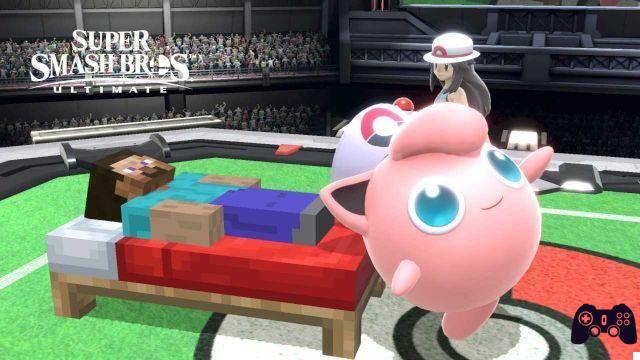
Jigglypuff - Super Smash Bros. Ultimate Character Guide
The last of Smash's original twelve fighters, the ones that never failed, is Jigglypuff. Its inclusion does not arise only from the popularity of Pokémon in the midst of love for the anime; his ability to inflate like a balloon allows him to draw heavily on Kirby's aerial movement ... almost.
- Franchise of origin: Pokémon
- Origins: Jigglypuff, at least in the first seasons of the anime, was among the most well-known recurring characters. In the games, its main characteristic is that of being a Normal-type Pokémon and (retroactively) Fairy-type, but it has nothing particularly iconic to the point of making it a must in other games as well. We remember him best for the gag in which, after using the Singing move, he disfigured the faces of his victims with a marker. Poracci.
- Gameplay: Do not be afraid, Song there is also here (↑ + B). Nearby opponents will eventually doze off, but this will only prove useful if they've taken a lot of damage before. It's a Special Attack on top, but Jigglypuff's aerial mobility is an improved version of what we've seen with Kirby: more generous jumps, and the ability to attack (A) after each of them for devastating combos. To compensate for this strength, Jigglypuff is one of the lighter characters. Rotolamento (B) is loadable, but losing control of it and getting out of the arena is all too easy. Botta (↔ + B) is a simple punch that is only really useful after weakening enemies. Rest (↓ + B) puts Jigglypuff to sleep: it seems counterproductive, but not if you do it on the opponent. Trust me.
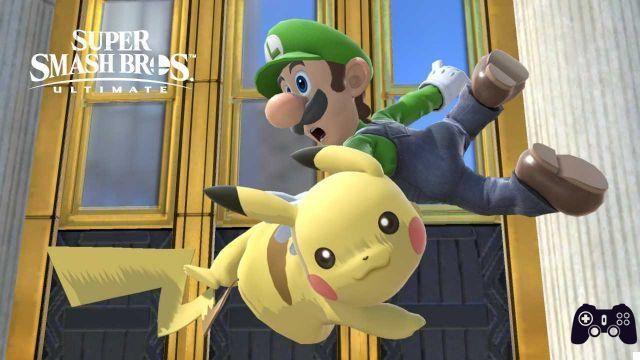
Concluding details, second episode: aerial dodges
You may have noticed how in this Super Smash Bros. Ultimate character guide we started to press a little on the accelerator by shortening the input descriptions for Special Attacks. Just to be clear: we will do it in the future too, because the meat on the fire it will increase more and more. As you have read, in fact, pressing ↑ + B is not always a pass to return to the field once thrown out. Remember the shields and dodges we talked about last time? Good news: there are also some aerial dodging, and carrying them out is very simple.
All you will need is activate the shield while you are moving through the air. Not only will you give yourself extra momentum, but you will also be momentarily invincible as you do so. This technique, introduced in the second Smash, was crippled in the next two chapters, but in Ultimate it returned to its former glory. As you experiment and improve you will find that dodging an air strike outside of re-entry is not only advisable, it is common sense.
That's all for today: how are you finding yourself? (You can find the summary here.) Please let us know by leaving us a comment below, and don't forget to stay on Holygamerz to not miss any news from the videogame world and beyond.




